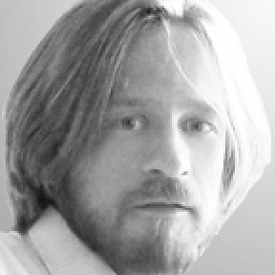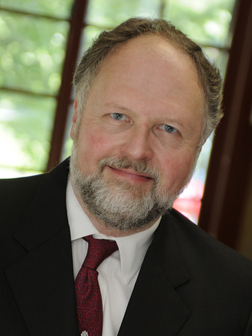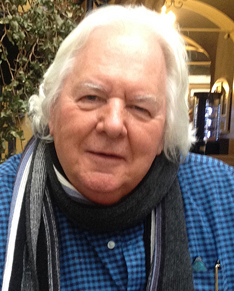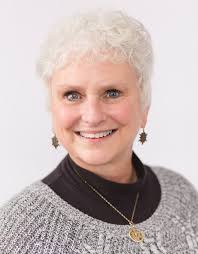Printed in the Summer 2019 issue of Quest magazine.
Citation: Otto, Steven ,"Answering Back: How to Reply to Slanders against Theosophy" Quest 107:3, pg 28-31
By Steven Otto
 This is a plea that we Theosophists take more care of our reputation. We should fight more against the lies about Theosophy and its protagonists.
This is a plea that we Theosophists take more care of our reputation. We should fight more against the lies about Theosophy and its protagonists.
Theosophy is committed above all to altruism and philanthropy, as well as reconciliation and the brotherhood of all nations and religions. H.P. Blavatsky was one of the most humane and most progressive individuals of the nineteenth century, and she is known not only as the founder of the modern Theosophical movement but of the modern esoteric movement as well. Numerous Theosophical associations and websites and uncounted Theosophists worldwide attest to these facts.
But in Germany today, Theosophist sometimes means racist and Nazi—even liar, conspirator, Satanist, supporter of genocide, sorcerer, necromancer, and anti-Semite. I think no more proof is needed that we live in the Kali Yuga.
Recently the website of the well-known German public-service broadcasting network Bayerischer Rundfunk published this under the category “right-extremism”:
At the end of the nineteenth century, numerous occult groups arose as well as their publications advocating racism, nationalism, anti-Semitism, and technological progress in a crude mixture of conspiracy-theory fantasies. These include, for example, the racial theoretical publications, such as The Secret Doctrine of the Russian occultist Helena Blavatsky.
This article is about hideous Nazi theories and criminals. An isolated case? Unfortunately not. And what is just as bad, the authors can refer to specialized works or “scholarly” literature! So let’s have a look at the allegations a little more closely:
The racism allegations are of course unjustified. Although HPB writes of races, for example, Root Races, this term means nothing else than humankind; according to the teachings, the present Fifth Root Race includes all people currently living. The term Root Race therefore has nothing to do with racism. It is true that in some cases HPB refers to the anthropology current in the nineteenth century, when it was unfortunately normal to speak of bastard races, lower races, and savages. Almost all anthropologists of the time did so, for example Edward B. Tylor, Louis Agassiz, and J.L.A. de Quatrefages—as, in the previous century, did Immanuel Kant—but they not known as racists. Practically the entire society of that time, as well as the media, also spoke in this manner.
Blavatsky often makes one point very clearly, and that was absolutely contrary to the prevailing opinion of her century: “In reality there are no ‘inferior races,’ for all are one in our common humanity” (Blavatsky, Collected Writings, 8:406). This view is also evident in The Secret Doctrine: “Thus the reason given [the karmic cycles] for dividing humanity into superior and inferior races falls to the ground and becomes a fallacy” (Secret Doctrine, 2:425).
Today this point of view is common, but it was revolutionary in the nineteenth century, yet it was asserted by Mme. Blavatsky and by Theosophy.
Some scholarly literature comes closer to the truth. George L. Mosse, an acknowledged expert on racism who is of Jewish descent, writes: “Theosophy itself was not racist” (Mosse, 119).
Of course not! But even nowadays this is often ignored.
The Nazi accusation, a particularly sensitive issue in Germany, is no less stupid. It is repeatedly purported that the Nazis had an esoteric ideology and that Theosophy would have contributed ideas to their inhuman teachings.
Certainly you can read about Aryans in The Secret Doctrine, and the swastika is a part of the Theosophical Society’s symbol. Both of these concepts were abused abominably by the Nazis. The swastika, of course, is a spiritual symbol that has been used among many nations worldwide. Theosophical teachings use the term Aryan in the sense of religion (Zoroastrianism), linguistics (Indo-Aryan languages), and also in an ethnic sense, as well as in the meaning of the fifth root race, or present-day humankind. But the Nazis’ hideous notion of the Aryans as a Germanic “master race” has nothing to do with Theosophy; it has been traced back to the French diplomat Arthur de Gobineau. In his Occult Roots of Nazism, historian Nicholas Goodrick-Clarke makes this point: “The central importance of ‘Aryan’ racism in Ariosophy, albeit compounded by occult notions deriving from theosophy, may be traced to the racial concerns of Social Darwinism in Germany.” (Goodrick-Clarke, 14).
The inhuman “philosophy” of Ariosophy (a quasi-esoteric teaching current in Germany around the turn of the twentieth century focusing on the alleged Aryan race) would be the only connection between Nazism and Theosophy. But there is not even a direct and proven connection between Ariosophy and Nazism. Even if there were, Ariosophy abused Theosophical terms but did not hold to the Theosophical doctrine. This is the internationally recognized result of research. Furthermore, research also debunks the malignant idea that the Nazis were esotericists. We must keep in mind that during the Nazi era, all Theosophical associations were forbidden in Germany. Additionally, Theosophy teaches the higher development of mankind by the mixing of nations or peoples, not by isolating and eradicating some of them, as the Nazis did.
The accusation of Satanism comes from the false assumption that Theosophy worships the devil of the Christian church. These people forget that the church’s view of the devil is aberrant in view of the history of philosophy. Lucifer, supposedly equated with the devil, is the Latin name for the morning star. In Revelation 22:16 Jesus even speaks of himself as the “bright morning star” (stella splendida et matutina in the Latin Vulgate). This helps clarify the true Theosophical understanding of the metaphor of Lucifer, because Theosophy understands this in the sense of a light bringer, like the esoteric view of the Greek Prometheus, and not in the strange (and in ancient times unusual) sense, employed by the church, of eternal evil personified.
The ever unknowable and incognizable Karana alone, the Causeless Cause of all causes, should have its shrine and altar on the holy and ever untrodden ground of our heart—invisible, intangible, unmentioned, save through “the still small voice” of our spiritual consciousness. Those who worship before it, ought to do so in the silence and the sanctified solitude of their Souls; making their spirit the sole mediator between them and the Universal Spirit, their good actions the only priests, and their sinful intentions the only visible and objective sacrificial victims to the Presence. (Blavatsky, Secret Doctrine 1:280)
That, like the Theosophical teachings as a whole, sounds evil only to the ears of the devil.
As for the alleged Theosophical justification of genocide (which can be found even in so-called scholarly literature), this is mainly based on a false and malicious understanding of karma. If someone teaches the doctrine of karma in a fatalistic sense to excuse his own negative actions against other persons, or to say that it is unnecessary to help others in distress because it is their immutable fate, he is teaching neither the original doctrine of karma nor the Theosophical views of Mme. Blavatsky. When the doctrine of karma was taught properly, as she did, it always stressed personal responsibility and charity—things that false views of karma would never allow. Nor could the true doctrine of karma ever be used to justify genocide.
Theosophists are sometimes called proponents of sorcery and necromancy. This is wrong too, because Theosophical teachings strictly discourage the use of practical magic. HPB’s teachings say that even meditation is only a good thing if it helps one toward a more virtuous life. Certainly HPB played a role in early spiritualism, but she used it as a vehicle for introducing esotericism in the West, and she expressed a negative opinion of practical spiritualism after 1875 at the latest.
No less absurd, but just as common, is the accusation that Theosophy is involved in a global conspiracy that wants to irrevocably enslave humanity (keywords: “New World Order”; “conspiracy theory”). According to these views, this world conspiracy uses power, money, and sensual pleasures, along with fear, to subordinate people to it, consciously or unconsciously. But a true Theosophist, who lives a life of reason, virtue, and altruism, and who believes in the immortality of the human soul, would not put any faith in material possessions or sensual pleasures and would fear nothing, even physical death. Nor could such a person deceive or manipulate or suppress in any way. Therefore it would be a source of the greatest danger for the “dark forces” and the “world conspiracy” (even if they exist) if all men were real Theosophists.
Theosophy is also accused of anti-Semitism. It is true that HPB criticizes the Jewish religion, as she criticized other religions, and that in some very few cases she applied this criticism to the members of this religion. This should not be, because Theosophy also teaches that we should not judge other people. It is important to make this differentiation. I can, for example, condemn superstition. But that does not, or should not, mean that I condemn people who are superstitious, because they are more than mere superstition; they are human beings, and brothers and sisters in spirit. Anti-Semitism will have nothing to do with all that.
There is no anti-Semitism in Theosophical teachings. On the contrary, HPB spoke out against Jew baiting, for example as follows: “Quite clear and unmistakable this. The unfortunate, despoiled Israelites are plainly charged with abducting Christian children to behead and make oracular heads with them, for purposes of sorcery! Where will bigotry and intolerance with their odium theologicum land next, I wonder?” (Blavatsky, Collected Writings, 7:222)
Indeed Albert Einstein, a Jew, was a student of The Secret Doctrine. In a 1935 conversation, Einstein said, “It’s a very strange book, and I’ve even told Prof. [Werner] Heisenberg, my fellow physicist, to get a copy and keep it on his desk. I urged him to dip into it when he’s handicapped by some problem” (Algeo, 327).
The basis of Theosophical teachings is often doubted. This is easy, because their roots are mystical, but the existence of the books of Kiu-Te, sources for The Secret Doctrine, has long been proven. There is also a significant evidence for the existence of the Book of Dzyan (see the work of David and Nancy Reigle).
The allegations of lies and fraud today have all been refuted. The allegations of the Coulomb, Coleman, and Cous affairs, and of the Hodgson Report, which claimed that HPB was a fraud, have been shown to be wrong, even if it has sometimes taken over 100 years to prove it. One who doubts should read the important work of Vernon Harrison or Sylvia Cranston’s biography of HPB. Nevertheless, these false accusations, like those of HPB’s illegitimate children (!), are still widespread today.
The enemies of Theosophy are still very active and very well organized. In 1986, the Society for Psychical Research retracted the Hodgson Report. But even today one cannot clearly read this fact on Wikipedia (in both the English and German versions). That these facts are missing from Wikipedia is not a coincidence, as I discovered during my own involvement with Wikipedia (I’m banned from the German section). We all should keep an eye on Wikipedia on behalf of Theosophy, and we should exert considerable pressure against falsehood, because Wikipedia is very widely visited. This is true of other sites as well. If you need help with this, feel free to contact me.
A lot has happened in the last thirty years. Public opinion of Theosophy has improved a lot. We can achieve further clarification only if Theosophists respond, whether with letters to the editor and comments to current websites, or on their own websites and social-media pages, against the lies. We should also involve ourselves in Wikipedia and learn its rules; then we may be able to change it. This is an important task, especially for the official representatives of Theosophy, including the Theosophical Society and related organizations.
We should keep the following quote from HPB in mind: “He who hears an innocent person slandered, whether a brother Theosophist or not, and does not undertake his defence as he would undertake his own—is no Theosophist” (Blavatsky, Collected Writings, 8:171).
Let us act accordingly whenever we see lies about Theosophy, HPB, or other Theosophists.
Sources
Emphasis in quotes is in the original text.
Algeo, John. “Theosophy and the Zeitgeist.” In The American Theosophist 75, no. 10 (Nov. 1987), 322–32.
Blavatsky, H.P. Collected Writings. Fifteen volumes. Edited by Boris de Zirkoff. Wheaton: Theosophical Publishing House, 1960–91.
———.
The Secret Doctrine. Three volumes. Wheaton: Quest, 1993.
Cranston, Sylvia, and Carey Williams. HPB: Life and Works of Helena Blavatsky, the Founder of Modern Theosophy. Los Angeles: Jeremy P. Tarcher, 1993.
Goodrick-Clarke, Nicholas. The Occult Roots of Nazism. New York: New York University Press, 2004.
Harrison, Vernon. H.P. Blavatsky and the SPR: An Examination of the Hodgson Report of 1885. Pasadena, Calif.: Theosophical University Press, 1997.
Mosse, George L. Toward the Final Solution: A History of Racism in Europe. New York: Howard Fertig, 1978.
Reigle, David. The Books of Kiu-Te or the Tibetan Buddhist Tantras: A Preliminary Analysis. San Diego, Calif.: Wizards Bookshelf, 1983.
Reigle, David, and Nancy Reigle. Blavatsky’s Secret Books: Twenty Years’ Research. San Diego: Wizards Bookshelf, 1999.
Steven Otto was born in 1976 in Saxony, East Germany. He studied computer science in media from 2001 to 2005 and is head of the digital-media department in a Munich publishing house. He has been an independent scholar of HPB’s Theosophy for over ten years. He is also an author, blogger, and publisher of a quarterly, international, noncommercial Theosophical newsletter, Soehne des Feuers, on his website, soehne-des-feuers.de/international-theosophy-news. A shorter version of this article originally appeared on this site: http://www.soehne-des-feuers.de/node/199. Contact: steven@soehne-des-feuers.de.
.
 Some explain tragedy and loss with the law of karma. Certainly karma seems to be at play in most, nearly all, situations. Most people most of the time get what they deserve.
Some explain tragedy and loss with the law of karma. Certainly karma seems to be at play in most, nearly all, situations. Most people most of the time get what they deserve.

 This is a plea that we Theosophists take more care of our reputation. We should fight more against the lies about Theosophy and its protagonists.
This is a plea that we Theosophists take more care of our reputation. We should fight more against the lies about Theosophy and its protagonists. A story is calling to me, through my window in a stone tower in a dry wood, near the medieval French town of St. Martin de Londres. I hear sangliers—wild boars—snaffling and snorting and muttering red secrets. I reach behind my back, to the place above my left kidney, where a boar marked me in another country. The boar is part of an old, old story that snares me from time to time. I would prefer not to reenter that now.
A story is calling to me, through my window in a stone tower in a dry wood, near the medieval French town of St. Martin de Londres. I hear sangliers—wild boars—snaffling and snorting and muttering red secrets. I reach behind my back, to the place above my left kidney, where a boar marked me in another country. The boar is part of an old, old story that snares me from time to time. I would prefer not to reenter that now. Dealing with tragedy and loss comprises two separate but equally important components: dealing with the situation in an emotionally healthy manner and understanding the why of the situation. In order to move forward in our spiritual journey, we need to work through tragedy and loss—emotionally as human beings and spiritually as part of the evolutionary journey. It is a profound process that requires time, effort, and insight.
Dealing with tragedy and loss comprises two separate but equally important components: dealing with the situation in an emotionally healthy manner and understanding the why of the situation. In order to move forward in our spiritual journey, we need to work through tragedy and loss—emotionally as human beings and spiritually as part of the evolutionary journey. It is a profound process that requires time, effort, and insight.